Painting, with Edible Salt

Salt painting, also called colored-salt painting, is painting with salt and pigments. Wang Hang, inventor of salt painting from Zhangxian County, has creatively integrated the salt from Zhangxian, her hometown and a county in Dingxi, a city in northwest China's Gansu Province, with traditional Chinese painting. Salt painting has added new vitality to the county's millennia-old salt culture.
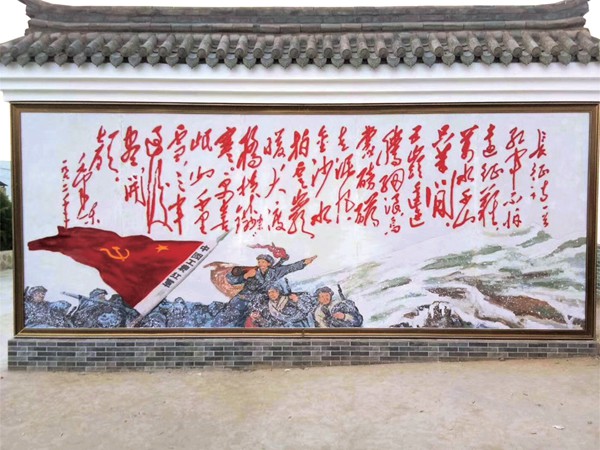
Painting Landscape, with Salt
Salt production in Zhangxian County dates back more than 3,000 years. During ancient times, Zhangxian was a salt-producing area, and production of salt from wells created prosperity for the county. The locals' ancestors developed the region's unique salt culture.
How did Wang come up with the idea of painting with salt? Salt culture in Zhangxian has a long history, she explains, and as such the locals have always had a special preference for salt. "I was born and grew up in Zhangxian. When I was a child, I saw how my grandparents made salt in the traditional way. Thus, I have a special feeling for salt. My mother is skilled at drawing and embroidering patterns. Influenced by her, I have liked drawing since I was young," recalls Wang.
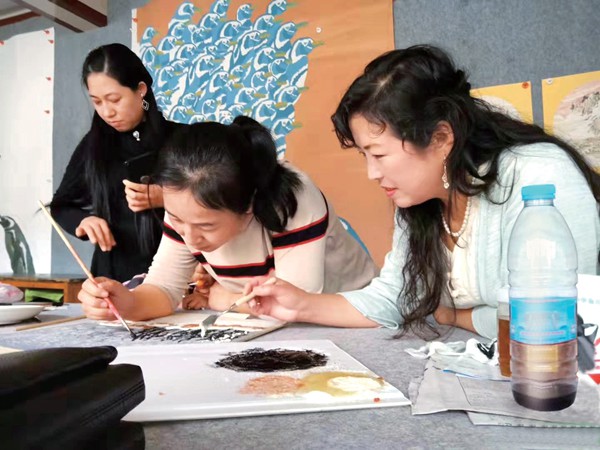
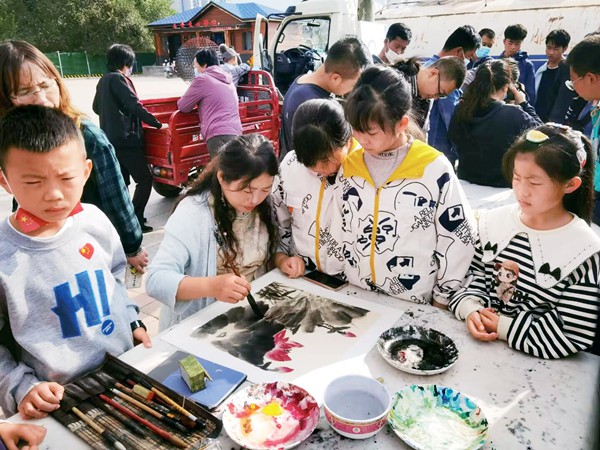
"I was employed by a salt factory after I graduated from high school. At that time, I worked with salt every day ... One day, more than two decades ago, I was seized by a whim to combine salt with painting. I wanted to paint the beautiful scenery of my hometown, but with salt."
Wang began studying how to paint with salt. She used a board, canvas or silk paper as her painting board, and she used a calligraphy brush and painting knife as her tools. However, she had difficulty finding a suitable adhesive on which to paste the salt.
"What sticky material could be used to affix the salt on the board? I tried many materials, such as resin, an egg white, starchy water and various kinds of glue. After many trials … I found an economical glue was most suitable for pasting the salt," recalls Wang.
In 2005, Wang completed her first salt painting. She then began experimenting, and she developed "colored salt," by combining salt and pigments. Making "colored salt" requires a few steps; firstly, mixing saline water and food coloring in a pot, and then stirring the colored saline water while boiling it. The second step is boiling away the water, drying the mixture, and then milling the mixture into a powder. The final step is mixing the powder with glue and water.
It takes Wang more than 20 days to complete a salt painting. After the painting is completed, it will take more than 20 hours for it to dry. Once dried, the salt painting can be preserved for a long time. Landscapes, specialties, figures, flowers and birds in Zhangxian have been subjects of Wang's salt paintings. Her paintings, with a 3D effect, have a high aesthetic value. "Aside from collection value, salt painting has broad market prospects, and good economic benefits. It also helps develop and promote the salt culture in Zhangxian, in an innovative way," says Wang.
In 2010, Wang received a national patent for salt painting. In May 2016, salt painting from Zhangxian County was added to the list of items of intangible cultural heritage of Dingxi City.
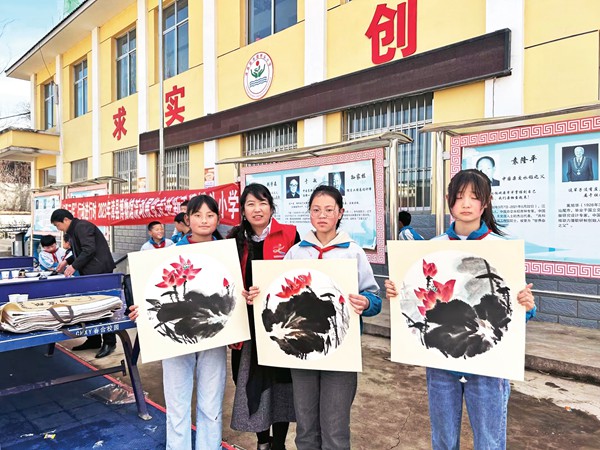
Promoting Art Form
"My hometown, and its salt culture, hold special meaning for me. The salt painting has become an ideal carrier for me to promote salt culture, and to express my deep love for my hometown," says Wang.
Her second solo exhibition of salt paintings was hosted by a calligraphy and painting academy on December 24, 2020. Fifty-two of her paintings were displayed, and they attracted many art lovers.
"I could not imagine salt could be used to make such good paintings. It's so amazing," said He Junqin, a visitor to Wang's solo exhibition.
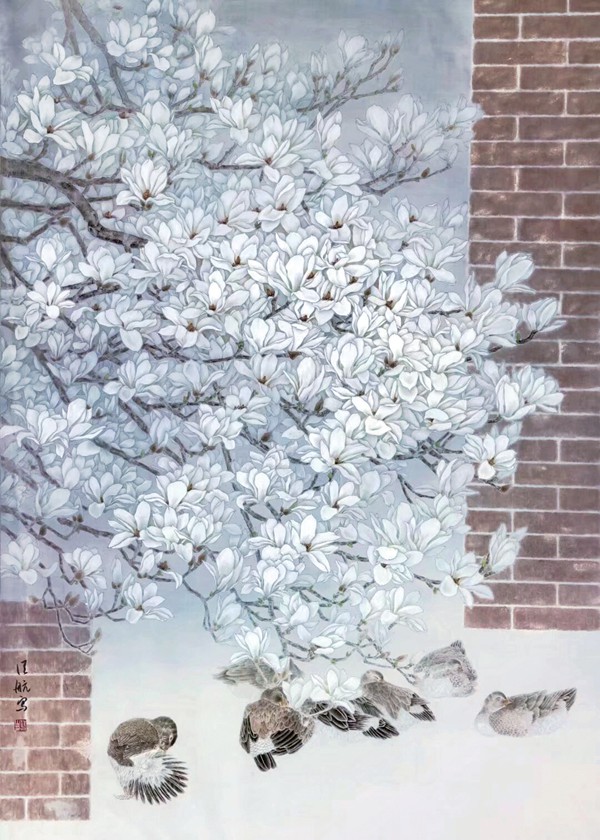
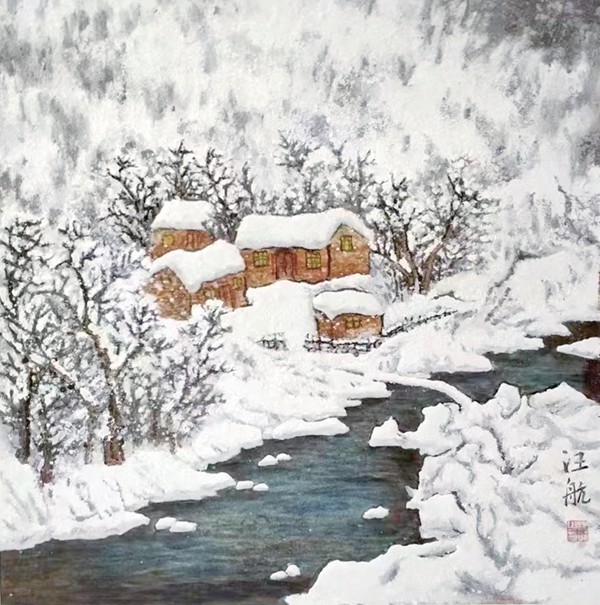

In December 2010, Wang established the Salt Painting Research Association of Zhangxian County, to help artists study salt painting techniques. Wang and members of the association have since organized various activities, including promoting salt culture and salt painting to residents in rural areas. They have also given lectures and training in salt painting, including to students in schools.
"Wang's salt painting is particularly good ... I have studied the techniques used to make salt paintings for more than a month. I'm particularly pleased I can earn money by making paintings," says Zhang Chunfang, a resident of Xinzhuangmen, a village in Zhangxian.
During the past few years, Wang has trained more than 200 children and rural women. Some of the women are disabled and/or single mothers. She has also given salt painting lessons during training sessions organized by local women's federations. Wang has helped local women increase their incomes by making salt paintings. In December 2019, Wang's studio was designated an Intangible Cultural Heritage Workshop for Employment and Poverty Alleviation of Gansu Province.

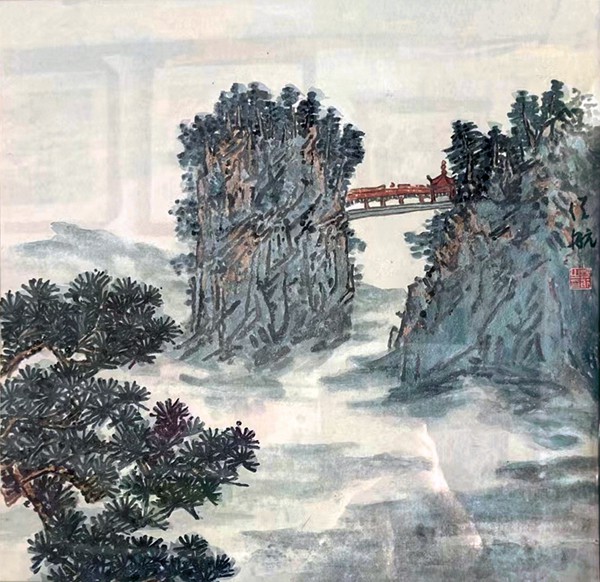
This year marks the 75th anniversary of the founding of the People's Republic of China, as well as the 90th anniversary of the departure of the Red Army's Long March. Wang says she will make large-scale salt paintings to promote the spirit of the legendary Long March.
Wang dreams of establishing a museum that focuses on the history and culture of salt in Zhangxian. She hopes more people in the county, especially children, will learn about their hometown, and about the history and culture of salt in the area. She often conducts art classes, at her own expense, so students in remote mountainous areas can study painting. She promotes salt culture to them, and teaches them how to make salt paintings.
"Many young people in Zhangxian know little about local salt culture, and they do not have deep feelings for the salt, like our generation. Development of salt painting requires more financial and resource support. I will continue to concentrate on making salt paintings, and to do what I can to promote the art form. I hope more people will contribute to the innovation and development of salt culture, which will bring new vitality to the time-honored salt culture," Wang says.
Photos from Interviewee
(Women of China English Monthly July 2024)
Editor: Wang Shasha
Please understand that womenofchina.cn,a non-profit, information-communication website, cannot reach every writer before using articles and images. For copyright issues, please contact us by emailing: website@womenofchina.cn. The articles published and opinions expressed on this website represent the opinions of writers and are not necessarily shared by womenofchina.cn.








.jpg)

 WeChat
WeChat Weibo
Weibo 京公网安备 11010102004314号
京公网安备 11010102004314号